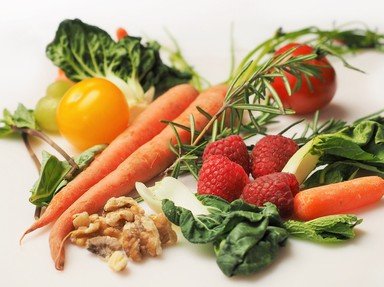Quiz Answer Key and Fun Facts
1. Nutrients are substances in food that provide raw materials and energy that the body requires to function.
2. One Calorie is equal to 1,000 calories.
3. Which sugar is the major energy source for your body's cells?
4. Which of these is a waxy, fatlike, substance found in mostly animal products?
5. Which organic compound serves as a building block for proteins?
6. Which type of nutrient comes in different types such as A, D, E, K, C, and others?
7. Which of these is a nutrient that is a solid, nonorganic, substance?
8. What is the most important nutrient of them all?
9. Which one of these would not be healthy to consume on a regular basis?
10. Which one of these foods is rich in carbohydrates?
Source: Author
foil7
This quiz was reviewed by FunTrivia editor
rossian before going online.
Any errors found in FunTrivia content are routinely corrected through our feedback system.

